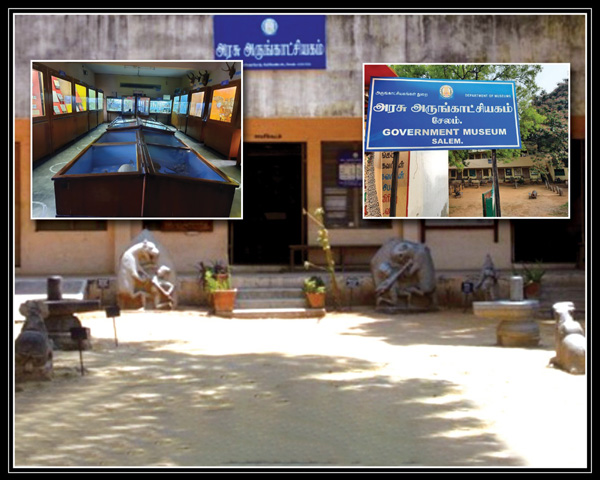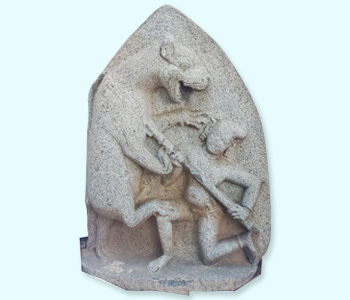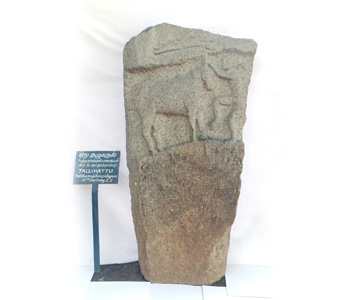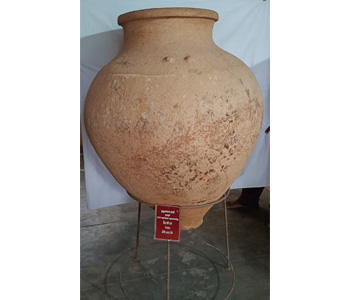Salem

Government Museum Salem is functioning at Sarada College Road, Fairlands Salem- 636 016 from the year 2007 onwards. The Salem Government Museum was formed by the then District Collector Thiru.A.M.Swaminathan,I.A.S., with the support of the Local Artist Group called Contemporary Writers and Painters Association. The Museum was opened to the public in the year 1976. From the year 1976 to 1979 it was functioning under the District Administration. Later in the year 1979 it came under the Department of Museums. From 1979 to 1996 Govt.Museum Salem was functioning at the Three Bungalow . From 1996 to 2007 January it was functioning at the Court building. This was the first District Museum created by the people, for the people and formed the basis for the creation of new District Museums.
It is a multipurpose Museum comprising of Archaeology with collection of Sculptures, Anthropology with pre-history, Ethnology, Arms, Musical Instruments collections, Philately, Numismatics, Decorative Arts, Botany, Zoology, Geology, and Paintings.
The sculpture garden is situated in front of the Museum welcoming the visitors. The collections include sculptures, epigraphy revealing the historical facts. Hero stones depicting the brave act of warriors, chieftains who ruled the Salem district are highlighted here. Sculptures belonging to Pallava, (Jyeshta devi) Chola (Tirumal), and Vijaya Nagar period (Kadiranallur Sridevi, Bhudevi) shows the chronology and the artistic works of that period. The fact that Jainism was prevalent in Salem Dist. is known by the Parsvanatha sculpture from Paruthippalli belonging to 12th Century. Magadesan Peruvazhikal of 13th Century from Aragalur shows the National Highway from Aragalur to Kanchi. Chieftains like Ramachandra Naicker,Vanagamudi,are represented here. Development of Tamil letters are kept on display. Other noteworthy objects are the terracotta figurines of folk deities, Cannons of the British period,and the Fibre model of Dinosar.
Photographs of District personalities are kept on display in the gallery. Painting gallery comprises of paintings by D.P.Roy chowdry, Pon.Raghunathan,S.K.Rajavel and other contemporary artists. Salem flora and fauna are represented through dry and wet specimens. Insectivorous plants, timbers, snakes, fishes, crabs, tiger skin, shell of tortoise are interesting collections. Fossil, Woodcarvings, manuscripts, terracotta's, shell bangles are also noteworthy specimens. Coins, foreign currency,Stamps,First Day Covers, objects of decorative arts, Old stone Age tools (About 50,000 years) from Athirampakkam (Thiruvalluvar Dist.),New stone Age tools (About 50,000 years) from Shevroy and Kolli Hills, North Indian Sculptures, Church bell on display attract the visitors. Cannon balls, Spears, Sword, Burial urns collected from various places of Salem District highlight the artisan techniques and are centre of attraction for the students.
Contact Details :
The Curator,
Government Museum,
Sarada College Road,
Fairlands,
Salem - 636 016.
govtmuseumsalem2@gmail.com
FEW IMPORTANT EXHIBITS :
© 2026 All Rights Reserved . Government Museum
Designed & Developed by Webtrendz Technologies India Pvt Ltd






